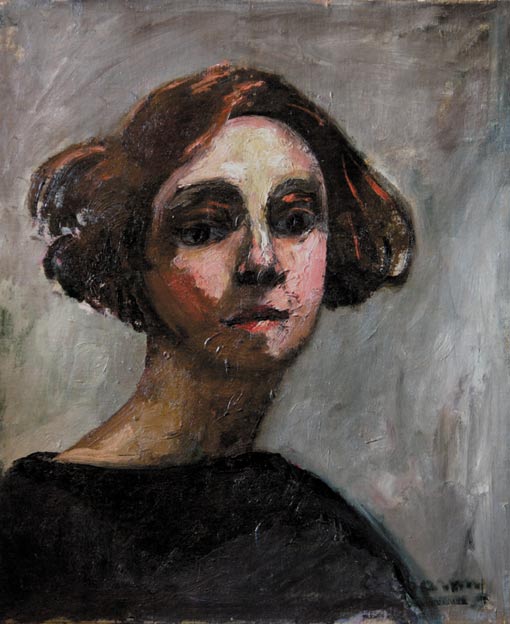

EMILIE CHARMY
"AUTOPORTRAIT
OIL ON CANVAS, SIGNED
FRANCE, C. 1930
Emilie Charmy Emilie Charmy was
a prolific painter in France during the early and mid–twentieth
century, despite the marginalization of education and resources for
women artists at the time. In 1904 Charmy exhibited
for the first time at the Salon des Indépendants and in 1905
at the Salon d’Automne, where the term “les fauves”
was first used by critic Louis Vauxcelles to describe the bright boldness
and freedom of Fauvism. Charmy’s work at the time encompassed
mostly still-lifes, though they were executed with a distinctly masculine
command. She quickly gained recognition and acclaim among her peers
including the reputable dealer Berthe Weil, who helped launch Charmy’s
career. Critic Roland Dorgelès praised Charmy by writing that
she “… sees like a woman and paints like a man.” Though
today considered an extremely gendered and offensive critique was at
the time an outstanding compliment. An admirer, Georges
Bouche, was so struck by Charmy’s work he insisted on meeting
the artist under the assumption she was a man due to her artistic mastery.
The two became well acquainted, eventually married and had a son, Edmond.
Charmy and Bouche lived independently from each other for quite sometime
as she was extremely committed to and focused on her career. Charmy’s fame
and exposure grew as she had several solo exhibitions and participated
in a group show at the esteemed Galerie d’Oeuvres d’Art
as well as the 1913 Armory Show. Charmy was made an official member
of the Salon d’Automne in 1910. She attracted the attention of
patron Compte Etienne de Jouvencel who arranged an exhibition for Charmy
at the Galerie Styles alongside her male contemporaries Ingres, Delacroix,
Corot, Manet, Renoir, Matisse, Cèzanne, Derain, Rouault and Picasso.
The oeuvre in which
Charmy worked ranged from still lifes, figures and nudes to political
portraiture. Though most of the subject matter had been deemed ‘feminine’
her technique, stylization and aesthetic demand is highly masculine.
She was acclaimed by critic Louis Vauxcelles in 1921 as ‘one of
the most remarkable women [artists] of our time.’ She became identified
with and established alongside Suzanne Valadon, Jacqueline Marval, Marie
Blanchard, Marie Vassiliev and Sonia Delaunay. The majority of Charmy’s
work is held in private collections, though some exists in the Paris
Museum of Modern Art, the Georges Pompidou Centre at Beaubourg, the
Musée d el’Orangerie, the Tel-Aviv Museum and the Musée
des Beaux Arts in Lyon. |